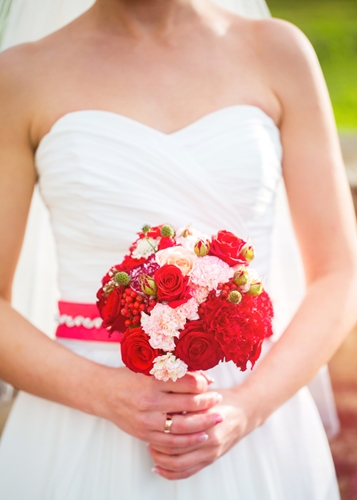The U.S. had over 2 million weddings in 2012, according to market research conducted by the Wedding Report. That’s a lot of ceremonies to plan. Anyone who has taken part in a wedding knows also knows that that’s not an easy task. Yet, many would probably agree that weddings should be more about the celebration of a union than the stress and fatigue that comes with organizing such an event. Most brides and grooms would probably welcome the opportunity to cut down on their own planning worries.
Businesses, then, have a golden opportunity come February – National Wedding Month – to tap into a lucrative market and provide some much needed help to brides and grooms across the country. Just looking at some of the decisions and steps required for a ceremony suggests that promotional products can be a thoughtful and useful gift.
The checklist
A sacred list is often passed down from couple to couple, detailing every last step involved in wedding planning. It is the calendar checklist, and it covers everything from booking the band to choosing RSVP calligraphy. According to The Wedding Report, the average length of engagement over 2011 and 2012 was 15 months, which is actually a drop from a few years’ previous, when the average length of engagement was 18 months. A quick look at a sample 12-month checklist, and it’s easy to understand why.
Wedding website The Knot suggested that a wedding consultant, a date and a ceremony site be booked at least 12 months in advance, which makes sense given how quickly venues reserved. At about 8 to 10 months prior to the wedding, people should register gifts, take out insurance policies, order gowns and start thinking about floral decor. By 8 months, couples will went to send out save-the-dates, which are different from the actual invitations. As the months close in, there are musicians to be booked, honeymoons to be planned and pre-wedding counseling to attend. There are no less than 60 items to be crossed off, and that’s just one list.
Personalized calendars are an obvious choice to give to grooms and brides-to-be. Not only will the personalization be sentimental, but it will no doubt get a lot of use. To step it up a notch, businesses could even fill in calendars with all of the necessary checkpoints, thereby saving couples a step.
The budgets
Another reason why couples may need to start planning early is the amount of money weddings generally end up costing. The Knot and the Wedding Channel’s latest Real Weddings Study found that the 2012 average wedding budget was $28,427, excluding the honeymoon. Venues alone cost close to $13,000; photographers, $2,379; and catering, $63 per person, which can easily total in the thousands of dollars.
Excel spreadsheets are essential when totaling up the cost of a wedding, but a financial planning log can be handy when meeting with potential caterers, musicians and venue owners to jot down costs.
The style
Much of the cost of a wedding depends on size and style. Luxury weddings can easily cost a fortune, especially for couples wanting ice sculptures and live orchestras. Do-it-yourself weddings in a backyard can cost decidedly less. Yet, because there are so many components to a wedding, there is a lot of potential customization for couples to consider. As such each wedding is going to have to decide on a very specific style based on their aesthetic preferences as well as their budget. Given the seemingly limitless possibilities, businesses may want to gather digital content of different types of weddings and upload them on promotional flash drives to give to recently engaged couples to help them with their ideas.

